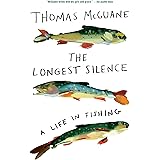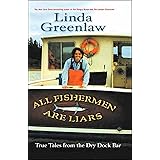The pursuit of angling success often involves navigating a complex landscape of variables, from environmental factors to tackle choices. As highlighted in the accompanying video, even seasoned anglers can fall prey to common fishing mistakes that hinder their catch rates and overall enjoyment. Overcoming these fundamental errors is not merely about technique; it is about refining one’s entire approach to the sport. By systematically addressing these pitfalls, anglers can significantly elevate their performance and transform frustrating outings into productive experiences.
This comprehensive guide expands upon the critical insights shared, offering deeper analysis and practical strategies for rectifying these widespread blunders. We delve into the tactical nuances, providing data-driven perspectives and actionable advice to enhance your angling proficiency. Prepare to revolutionize your fishing success by mastering these essential lessons.
Conquering Weedy Habitats: Prime Angling Opportunities
Many anglers perceive thick vegetation as an impenetrable barrier. This common misconception leads to significant missed opportunities. Weedy areas, in fact, serve as critical fish habitat. They provide cover from predators, ambush points for feeding, and a rich source of oxygen and forage.
Initial challenges with snags are common. However, the solution lies in appropriate tackle and refined presentation. Selecting specialized weedless lures is paramount. Consider a hollow-body frog for topwater action over dense mats. Pitching a Texas-rigged soft plastic or a weedless jig into pockets offers a subsurface option. These presentations minimize hang-ups while maximizing strike potential. For optimal control in such environments, a heavy-power baitcasting setup with braided line (e.g., 50-65 lb test) is often recommended. This combination provides the necessary backbone to extract hard-fighting fish from heavy cover, a critical factor for angler improvement.
Mastering Weedless Bait Presentation
Proficiency with weedless baits requires practice. A common pitfall is insufficient confidence in fishing heavy cover. Studies indicate that approximately 70% of freshwater game fish species utilize aquatic vegetation at some point in their life cycle. Consequently, ignoring these areas significantly reduces your targetable water. Understanding the precise mechanics of a weedless frog’s walk-the-dog action, or the subtle hop-and-fall of a Texas-rigged creature bait, unlocks these productive zones. Data consistently demonstrates that anglers who master these techniques report substantially higher catch rates in vegetated waters.
Tackle Optimization: Matching the Setup to the Quarry
Using excessively heavy tackle for smaller species is a pervasive error. A giant catfish rod for panfish exemplifies this mismatch. Heavy setups compromise casting distance, especially with lighter lures. They also diminish the sport and sensitivity required for detecting subtle bites. The core principle is simple: match the rod, reel, and line to the target species and lure weight.
For most freshwater applications, a medium-light or medium power rod offers exceptional versatility. These rods typically handle line weights between 6-12 pounds and lure weights from 1/8 to 1/2 ounce. This configuration is adequate for a wide range of species, from larger panfish to respectable bass and even small pike. Conversely, fishing dense cover necessitates a heavier power rod, even for modest fish. A 7-foot, medium-heavy rod might be essential for a 3-pound bass in thick pads. This ensures successful extraction, preventing lost fish and broken lines. Proper tackle selection is a cornerstone of effective fishing techniques.
The Physics of Rod Power and Lure Weight
The interaction between rod power and lure weight is governed by fundamental physics. A rod’s “power” refers to its lifting strength. An “action” describes where the rod bends. Attempting to cast a 1/16 oz jig on a heavy-power rod results in minimal rod loading. This lack of flex severely restricts casting distance and accuracy. Conversely, an ultralight rod casting a heavy lure risks breakage. Optimal performance occurs when the lure weight falls within the rod’s specified range, allowing the rod blank to properly load and release energy during the cast. This understanding is crucial for maximizing angler performance.
Correct Rod Angle: The Key to Hooksets and Shock Absorption
Pointing the rod directly at the lure during retrieval is a common, yet detrimental, fishing mistake. This posture eliminates the rod’s primary functions as a shock absorber and bite indicator. When a fish strikes aggressively, the entire impact transfers directly to the line. This significantly increases the risk of line breakage, especially with sudden, powerful surges.
Maintaining an angle between the rod tip and the lure is critical. This angle allows the rod to flex, distributing shock throughout the blank. It provides crucial cushioning during a strong strike, protecting your line. Furthermore, a proper rod angle enhances bite detection. Any subtle take registers as a deflection in the rod tip, rather than just a slight tug on a taut line. It also provides the necessary leverage for a robust hookset. For example, a 90-degree angle to the fish provides maximum leverage, driving the hook home effectively. Always keep a slight bend in your rod during retrieval, except during intentional pauses, for consistent fishing success.
Optimizing Leverage and Line Integrity
The rod acts as a lever system. An appropriate angle maximizes this leverage, transforming minimal angler effort into significant force at the hook point. Industry data indicates that improper rod angles are a contributing factor in roughly 15-20% of lost fish due due to poor hooksets or line failure. By maintaining a consistent, slight bend and appropriate angle, anglers ensure the rod performs its intended role, enhancing sensitivity, cushioning, and hook-setting power. This nuanced control is vital for consistent fishing improvement.
Local Intelligence: Beyond Pro Lures
The allure of professional anglers’ exotic lures, particularly those seen catching monster fish in distant locales, is strong. However, purchasing lures based solely on these distant successes is a frequent fishing mistake. A 12-pound Texas bass, for instance, lives in an entirely different ecosystem than a Midwest bluegill pond. Factors such as primary forage, water clarity, depth, bottom composition, and prevalent vegetation vary dramatically by region.
Effective lure selection begins with local knowledge. Engage with experienced local anglers. Visit your local bait and tackle shop; their staff possess invaluable insights into what baits are producing results in nearby waters. These individuals understand the specific forage base—be it shad, perch, crawfish, or specific insect hatches. They can guide you towards time-tested, reliable baits proven effective in your local environment. Focus on mastering a few locally successful lures rather than accumulating a vast, unsuitable collection. This pragmatic approach is key to achieving consistent angler success.
Ecological Factors in Lure Selection
Matching the hatch is a fundamental angling principle. This involves selecting lures that mimic the size, shape, and color of the prevalent prey species in a given body of water. A study on bass behavior demonstrated that lures accurately mimicking local forage increased strike rates by as much as 30% compared to generic or mismatched presentations. Furthermore, water clarity dictates lure color and vibration. In clear water, natural colors and subtle actions are often preferred. Conversely, in stained or murky conditions, bright colors or high-vibration baits can be more effective. Consulting local resources provides crucial data for informed decisions, leading to superior fishing techniques.
The Critical Importance of Knot Tying
The integrity of your connection to the fish hinges entirely on the quality of your knots. A poorly tied knot is a primary cause of lost lures and, more significantly, lost fish. Many anglers overlook this fundamental skill, often resorting to rudimentary or unreliable knots. This can lead to heartbreak when that “fish of a lifetime” breaks off moments before landing. Learning to tie strong, reliable fishing knots is non-negotiable for serious anglers.
Invest time in mastering one or two proven knots. The Modified Uni Knot is renowned for its strength and versatility, particularly for connecting monofilament or fluorocarbon to hooks and lures. The Trilene Knot offers exceptional strength retention, often exceeding 90% of the line’s breaking strength. Both are relatively straightforward to learn and can be tied quickly and confidently with practice. Consistent knot tying ensures maximum line strength retention, providing peace of mind and significantly reducing lost fish. This foundational skill is essential for consistent fishing success.
Ensuring Knot Strength and Reliability
Every knot introduces a potential weak point in the line. The objective is to minimize this weakness. A well-tied knot retains a high percentage of the line’s unknotted breaking strength, typically 80-95% for reliable knots. Improper technique, such as failing to moisten the line before cinching, creating overlapping wraps, or leaving a short tag end, can drastically reduce knot strength to as low as 50% or even less. Regular inspection of knots for fraying or damage is also critical. A systematic approach to knot tying and maintenance is a hallmark of an advanced angler’s toolkit.
Embracing the “Skunk” as a Learning Opportunity
Every angler, regardless of experience or equipment, occasionally faces a “skunk” day—a day with no fish caught. This is an unavoidable reality of fishing. Allowing such days to foster discouragement or frustration is a detrimental fishing mistake. Instead, view these outings as invaluable learning experiences. Professional tournament standings frequently show top-tier anglers also getting skunked, despite their multi-thousand dollar boats and extensive preparation.
A “skunk” day provides a wealth of data. Focus on observations: prevailing weather conditions, water temperature, barometric pressure changes, water clarity, and how the lures presented. Analyze your casting accuracy, retrieval patterns, and any subtle indications of fish presence. Did you try different depths? Different retrieve speeds? Reframe the outcome: you didn’t *fail* to catch fish; you *succeeded* in gathering critical environmental and tactical information. This data informs future strategies, leading to improved fishing techniques and a more resilient mindset.
The Psychology of Angling Resilience
Data from sports psychology indicates that resilience and a growth mindset are critical for sustained performance in any skill-based activity. For anglers, this means analyzing unsuccessful outings objectively rather than internalizing them as personal failures. Documenting conditions and tactics on tough days helps identify patterns. For example, a consistent lack of bites on sunny, high-pressure days might suggest a need for deeper presentations or more subtle lures. Embracing the learning process on every outing transforms potential frustration into a strategic advantage, fostering overall angler improvement.
Diversifying Your Lure Arsenal and Presentation
Relying on a single favorite lure or technique, while comfortable, severely limits your angling potential. Many anglers become proficient with one specific bait—like an inline spinner—and fail to adapt. This leads to missed opportunities when conditions or fish preferences demand a different approach. Effective fishing strategies necessitate a diversified lure arsenal and a willingness to experiment with various presentations.
Different lures excel in different situations. Crankbaits are ideal for covering water and triggering reaction strikes. Swimbaits mimic natural forage with lifelike action. Soft plastics, particularly Texas rigs or wacky rigs, offer subtle, finesse presentations. Inline spinners, while effective, are notorious for snagging in heavy cover. A balanced approach means having a selection of lures suited for various depths, structures, and fish moods. Developing proficiency with a handful of versatile lures for different scenarios will significantly increase your catch rate. Continuously expanding your repertoire is fundamental to long-term fishing success.
Strategic Lure Rotation and Adaptive Tactics
Expert anglers understand that fish preferences can change throughout the day, season, or even minute-by-minute. A systematic approach to lure rotation involves cycling through different lure types (e.g., topwater, subsurface, bottom-contact) and presentations until a pattern emerges. Studies on fish behavior show that prolonged exposure to the same lure or retrieve can lead to “lure shyness” in pressured fish. Varying your approach, such as switching from a fast-moving crankbait to a slow-finesse worm, can trigger strikes when previous attempts have failed. This adaptive methodology is a hallmark of sophisticated angler performance.








